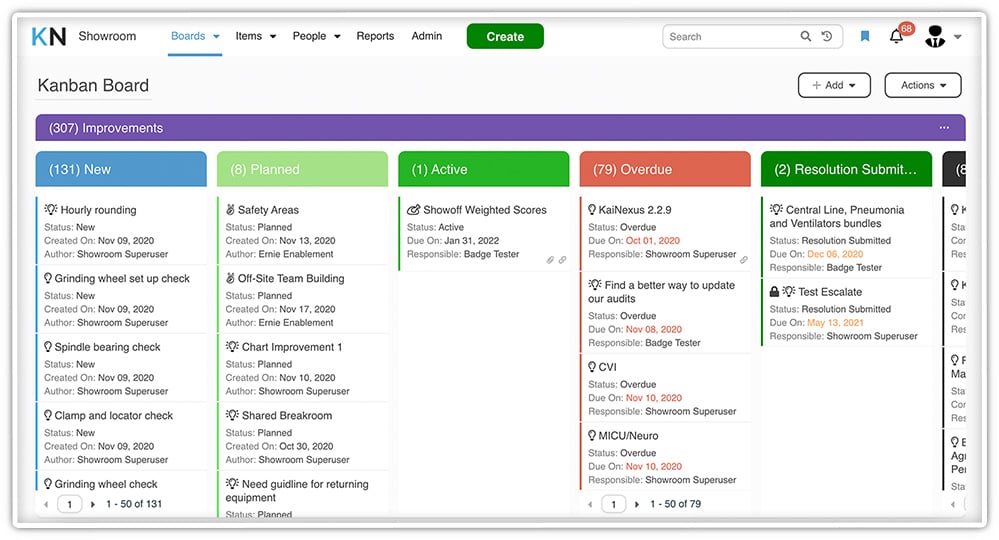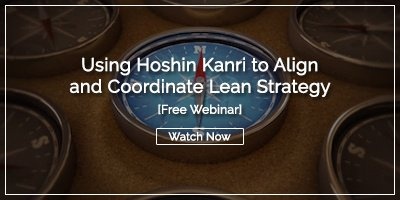 Most modern business management methodologies have roots in Toyota's approach to quality improvement and business optimization following World War II. Techniques included in what they called The Toyota Way have been borrowed, adapted, and rearranged into an approach known as Lean manufacturing. Because the framework works for many types of businesses, from healthcare to higher education, it is now often referred to as simply Lean.
Most modern business management methodologies have roots in Toyota's approach to quality improvement and business optimization following World War II. Techniques included in what they called The Toyota Way have been borrowed, adapted, and rearranged into an approach known as Lean manufacturing. Because the framework works for many types of businesses, from healthcare to higher education, it is now often referred to as simply Lean.
Lean is not a prescription for running a business; instead, it is a set of ideas that provides structure to the fundamental belief that continuous improvement is the only way to successfully compete and deliver customer value for a profit.
Successful Lean organizations apply a set of strategies that help optimize resource utilization, reduce waste, and delight customers. They work best when used together, but each provides value even when used alone.
Policy Deployment
The Lean policy deployment strategy, sometimes called Hoshin Kanri or Strategy Deployment, helps organizations stay aligned with their long and short-term goals. The first step is to identify the organization's "True North." This is the ultimate goal and purpose of the organization. While it may seem obvious, it is a mistake to assume that every employee understands what represents True North. During policy deployment, this vision cascades from leadership down to the front lines. As a result, each employee receives the information needed to know how their work contributes to the organization's ultimate success.
Next, it is necessary to craft the long-term goals needed to achieve True North. There are usually three to five breakthrough objectives that will take several years to complete. Key performance indicators to track progress are defined, and ownership for each goal is assigned.
Finally, the short-term actions that will further the breakthrough goals are assembled and assigned. Managers can use a Lean technique called Catchball to get feedback and help craft each individual's short-term objective.
The entire Policy Deployment process can be supported by a Lean tool called the X-matrics, which provides a simple structure for visual strategy execution.
Value Stream Mapping
Another key Lean strategy is value stream mapping. Keeping in mind that the concept of Lean revolves around providing an uninterrupted flow of value to the customer, it is essential to understand current processes to identify opportunities for improvement. The number of value stream maps needed depends on the complexity of the business, but ultimately every process should be mapped, and the intersections of operations, particularly those that cross-functional areas, would be well understood.
Value Stream Mapping is an exercise that requires the hands-on involvement of the people who operate the processes. Therefore, it is essential that the first pass document the reality of what happens today, not what leadership thinks happens. Only after an accurate vision of the current state is documented can the team consider the ideal state and target problems to be solved.
Waste Reduction
One of the main objectives of the value stream map is to identify resources and process steps that do not add value to the customer. These represent opportunities for improvement. Lean practitioners have identified eight types of waste to make it easier to identify. They include:
Defects: Quality problems and rework
Transportation: Needless movement of inventory or raw materials
Motion: Needless movement of people or equipment
Over-production: Creating products before the customer demands them
Over-processing: Adding steps or features that do not add value
Inventory: Storage of products, parts, or supplies that are not immediately needed
Waiting: Stalled processes waiting on inputs
Human Potential: Employee skills that are not maximized
Identifying and eliminating waste allows for a just-in-time approach to work in progress.
PDSA
When an opportunity to reduce waste is spotted, the Lean strategy of PDSA is used to eliminate or minimize it. PDSA stands for Plan, Do, Study, Adjust. It is a structured improvement cycle based on the approach of renowned business management expert Dr. W. Edwards Deming. He believed, "If you can't describe what you are doing as a process, you don't know what you are doing." Therefore even the act of improving is a process.
Plan: During the first step, defining the problem and understanding the final objective are necessary. As much time as needed should be spent on understanding the root cause of the problem. Often the 5 Whys problem-solving technique is useful. It is also critical to gather baseline data to understand the current process results and select the measurements that will be used to define success. At this point, the team also suggests a hypothesis about what will solve the root cause of the problem.
Do: Deming would look at implementing change as a scientific experiment. As with any investigation, you want to start small and limit the number of variables at play. The team tests their hypothesis at this stage by implementing a change and measuring the results. Every step and change is documented. If more than one adjustment is to be made to the process, they are added one at a time.
Study: Predictably, next, you will measure the results over time to see if they achieved the intended effect. Perhaps as important, it is critical to understand if the process improved for the reasons that you thought it would improve. The study stage is as much about analyzing this project as it is about learning from the exercise. Perhaps the change can be applied as successfully to other similar problems.
Adjust: If the change was successful and the team members understand why it worked, it is made part of the Standard work for the impacted process or activity. Remember that lasting change is hard, so it is necessary to recheck the process results regularly to ensure that the improvement is sustained.
Improvement management software is often used to support PDSA and other improvement efforts.
Visual Management
Visual management is one of the most valuable tools for ensuring that value flows smoothly to the customer. Several tools, including Kanban boards, support this Lean strategy. Kanban is an idea that also started in Japanese automotive manufacturing. Workers used signs on the shop floor to track inventory, supporting the just-in-time approach and helping eliminate the need for parts inventory.
Today, Kanban boards track work-in-progress as it flows from one step or process to another. This form of visual management helps leaders and team members identify backlogs or blocks to the workflow. Digital Kanban boards allow everyone to benefit from visualization, even if they are managing multiple boards or working remotely. For example, when there is too much work-in-progress at a particular point, managers can resolve the problem or slow down the previous steps.
Another widely used Lean visual management strategy is the 5S approach to workplace organization. The five elements of the approach are:
Sort: Keep only what is necessary for the workspace; get rid of everything else
Set in Order: Arrange and label those items that are needed
Shine: Keep everything clean and inspect the condition of all equipment
Standardize: Define and implement the ideal condition
Sustain: Practice regular maintenance and inspection

A well-organized workspace makes it easy to spot problems with a simple visual inspection.
Other popular Lean visual management tools include process control charts, engagement metrics, activity status, impact reports, and fishbone diagrams.
These Lean strategies can help organizations achieve operational excellence and long-term goals. They also improve employee engagement and create a united workforce with the tools to solve problems and constantly implement positive change.




Add a Comment